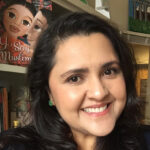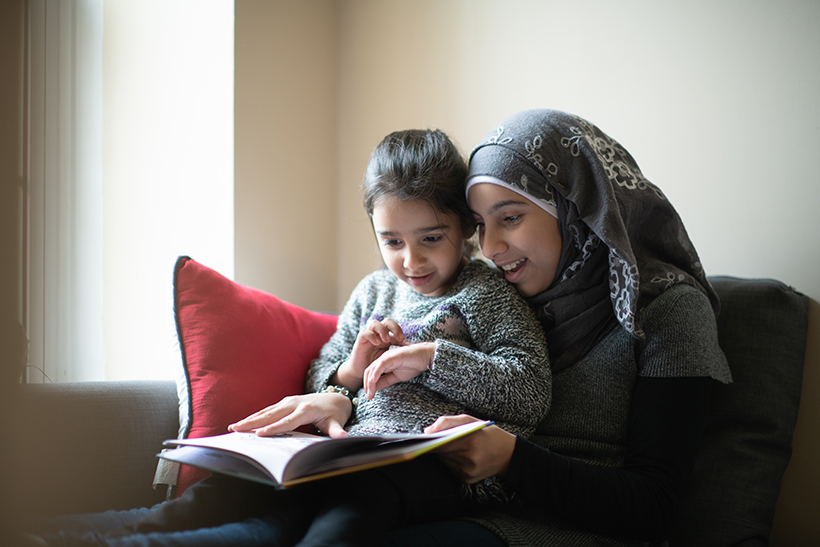This post was written by NCTE member Angie Zapata.
The role of picturebooks remains a critical art form for growing young children’s language and literacy lives while also affirming their identities as readers, writers, and members of their families and communities.
As we flood our rooms with well-selected literature that avoids replicating monoliths and perpetuating stereotypes, what conditions for young children might we nurture so that this new literature landscape fulfils its promise as a transformative space, a space where deficit assumptions of marginalized communities are challenged, and new mindsets emerge?
With continued calls for diversifying the texts in classrooms continue, we must consider the ways this shifting literature landscape can also produce opportunities for young children to hear, see, and experience ways with words (Heath, 1980) that are both like AND different than their own. Unfortunately, too often, mandates for young children’s classroom only present language in a Standardized English form, require that language be taught in isolation, and treat language solely as a convention to command rather than a daily practice.
In my recent Language Arts article “Cultivating a Critical Translingual Landscape in the Elementary Language Arts Classroom” (July 2020), I share what is possible in an elementary classroom when we make a commitment to sharing literature with young children that animates a wide variety of everyday languaging practices.
What happens in the classroom when we receive linguistically diverse picturebooks as artful and literary craft to appreciate and learn from, and as sociopolitical texts to interrogate?
In Mary’s third-grade classroom, questioning representations of language in picturebooks (see list below) nudged children towards a transformative space. As students read from the literature, Mary invited them to consider what language(s) and illustrated features were used to support the narrative. Here are some of the questions she posed:
- What do you notice about the way language(s) works in these books?
- What is the illustrator showing us about the ways languages work in the characters’ lives?
- How does the use of different languages shape the narrative?
- How do you feel when you see different languages in the books you read?
- Why do you think the author/illustrator included different languages in the book?
- Who gets to use that language(s) in their writing? Do you? Why? Why not?
- When you use that language, are you making fun of that language or are you being curious?
We found the last few questions in particular to be essential to help children explore issues of language appropriation and mock languaging.
Much has already been researched and emphasized about increasing culturally, linguistically, and ethnically diverse literature landscape in elementary classrooms and ensuring better representation of marginalized communities.
Changing the voices available on our classroom bookshelves also has the potential to change minds about what counts as language in the classroom, what counts as craft among our writers, and what is possible for our students’ understandings about language, identity and race. Cultivating a habit of appreciating and interrogating representations of language in texts among young children sets the stage for deeper language study in the future.
Sample Picturebooks Shared
Bowwow Powwow, by Brenda J Child, with illustrations by Jonathan Thunder. (Minnesota Historical Society Press, 2018.)
Yo Soy Muslim, by Mark Conzales, with illustrations by Mehrdokht Amini. (Salaam Reads / Simon & Schuster Books for Young Readers, 2017.)
Yo, Jo!, by Rachel Isadora. (Harcourt Children’s Books, 2007.)
Golden Dome and Silver Lanterns: A Muslim Book of Colors, by Hena Kahn, with illustrations by Mehrdokht Amini. (Chronicle Books, 2015.)
Dreamers, by Yuri Morales. (Neal Porter Books, 2018.)

Angie Zapata is an associate professor of literacy in the Department of Learning, Teaching, and Curriculum at University of Missouri, Columbia. She is a longtime elementary teacher of bilingual and multilingual children and a teacher educator of undergraduate students preparing to be teachers of language and literacy in diverse, elementary settings, as well as an advisor to doctoral students in Literacy Education.
It is the policy of NCTE in all publications, including the Literacy & NCTE blog, to provide a forum for the open discussion of ideas concerning the content and the teaching of English and the language arts. Publicity accorded to any particular point of view does not imply endorsement by the Executive Committee, the Board of Directors, the staff, or the membership at large, except in announcements of policy, where such endorsement is clearly specified.

